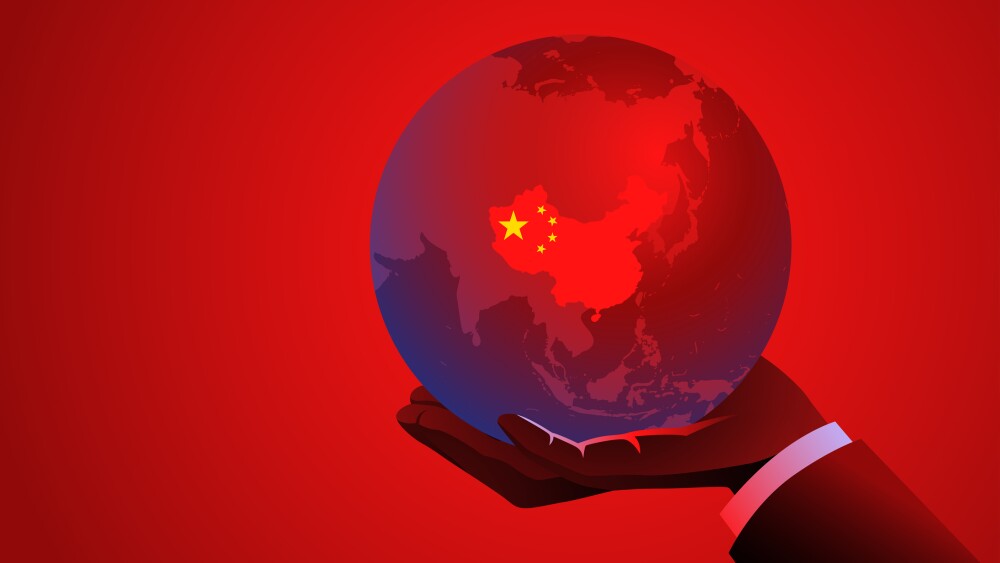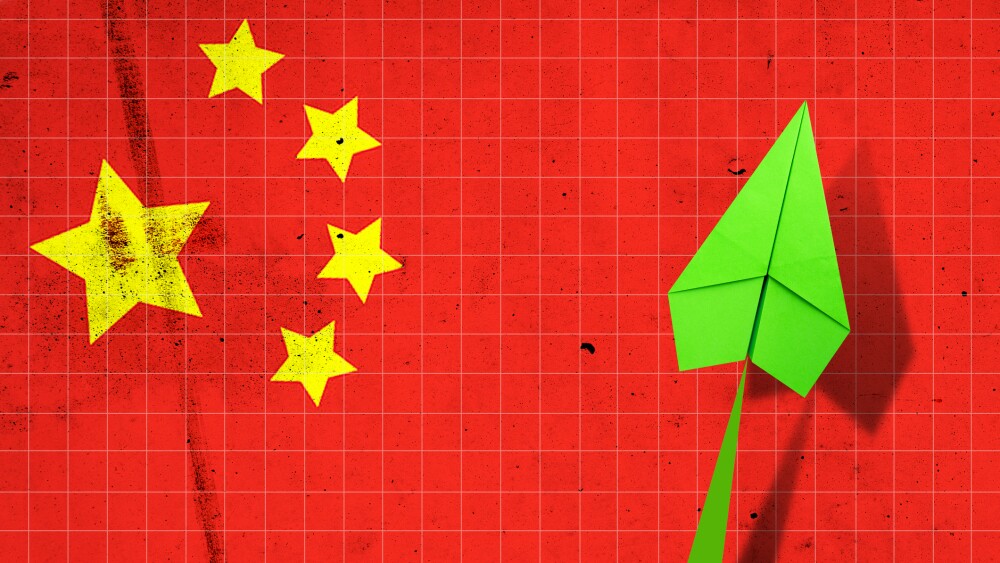Out-licensing drugs to multinational corporations is a natural step for Chinese biotechs, but the recent rise in deals is only scratching at the surface of partnership-ready biotechs in the region.
As multinational pharma companies have descended on China to find new drug candidates, the CEO of one company headquartered there watched a neighboring startup in Shanghai empty out its building.
The CEO, under the pseudonym of Tom, who asked to remain anonymous in order to speak candidly, heads a company that focuses on lung diseases in China’s vibrant biotech hub, the Shanghai Zhangjiang Pharma Valley. Tom and others who spoke to BioSpace say that the international pharma deal boom that has pushed China to the forefront of the world’s biotech scene obscures a different reality. On the ground, many companies were running out of money when the world showed up. Often, out-licensing deals to American or other companies offered their best shot to stay afloat.
A similar situation played out at BioBAY in Suzhou, about 65 miles west of Shanghai; companies have been quietly laying off staff, cutting their pipelines and hunting for new buyers since 2022. Some have filed for bankruptcy.
“Things were extremely hard [for companies] in 2023 and 2024,” said Tom, who returned to China from the U.S. in 2008. “Simply because they don’t have money anymore.”
Now, thanks to newly ignited international interest and exposure, China has emerged as the hottest place to find new molecules, and out-licensing overseas rights to promising drug candidates is a natural step for biotech companies based there. The rush of interest couldn’t have come at a better time for China’s biotechs.
But there’s not enough money to go around in a market that ballooned in the early days of the pandemic. So while international interest is generating excitement with record-setting deals, the feeling on the ground in China is mixed. Executives know that as some companies are catapulted onto the international stage, others will die at the same time.
“Whether or not the [biotech] ecosystem will have sustainable funding remains a challenge,” said Fanning Zhang, a partner at McKinsey & Company based in Shanghai.
As Tom and other CEOs have seen, out-licensing has become a forced move for most Chinese biotech companies including some of those with multimillion-dollar deals.
Rising Star
China’s rise as a biotech powerhouse can be traced back to the government’s overhaul of drug review regulations and capital investment from both private and public funds in the past decade. Based on vast patient and pharmaceutical engineer pools, with only 30% to 50% of the cost needed to develop a drug in the U.S., China seems to have achieved the impossible triangle in drug R&D: efficient, high-quality and cost-effective.
“China can do it in a way that can be summarized as ‘many, fast, good, and cheap’,” said Sam Lou, the former GM of Parexel China and co-founder of Hope Medicine, a biotech company based in Nanjing. “This is not a ‘DeepSeek’ moment for China’s biotechs. This is a confirmed trend.”
The country has also benefitted from the return of numerous internationally trained scientists, who have been educated elsewhere and returned home to work at local biotechs or start their own. They were drawn back to China by generous talent incentives and the profitable prospect of new drugs.
But just like in America, a rush of initial public offerings (IPOs) prior to 2022 brought a wave of unprofitable biotechs onto the Chinese markets. In 2021, Chinese biotech IPOs peaked at 89, 57 of which were in China’s mainland stock markets in Shanghai and Shenzhen. The window for going public snapped shut as regulations tightened and China continued to reel from the pandemic. Since then, tensions between the U.S. and China have risen while U.S. capital deployment in China shrank dramatically. In 2023, only 21 biotech companies successfully launched IPOs in China A-shares, marking a sharp decrease of 57.14% and 70.15% in total offerings and fundraising in IPOs.
“Now, there is no single modality that you can’t find a second candidate in China,” said Lou. “It’s not even just the second or third. There is almost no modality in which there are less than five or 10 startups at the same phase available [in China].”
That volume was driven in part by an influx of venture capital towards the end of 2024. These funds offered a NewCo strategy to bring a Chinese product across the pond. The Chinese company will spin off certain clinical assets and partner with investors to refinance them by creating a new company in an offshore jurisdiction. In October 2024, Kailera Therapeutics emerged using this strategy, raising $400 million in a series A backed by three venture capital firms. The company licensed four assets from Jiangsu Hengrui Pharmaceuticals, a leading biopharma in China.
“These are all new phenomena that were not common before,” said Jack, CEO of a Shanghai-based publicly-listed biotech who agreed to talk under the condition that he use a pseudonym. Jack has served multiple international pharmaceutical companies and biotech startups in China as vice president or general manager for over 20 years.
All the venture capital activity has attracted plenty of attention. Jack noted that many international pharmaceutical giants have sent business development teams to Shanghai in search of potential deal candidates, at the same time expanding their BD teams in China.
“We’ve seen many [multinational corporations] come here recently,” he said. “They want to get involved early on for the project they want.”
The past six months alone have seen 80 out-licensing deals from China, including some notable big-ticket announcements. On May 19, Pfizer committed up to $6 billion to 3SBio, Inc., a Shenyang-based biotech company, for ex-China rights to SSGJ-707, a bispecific antibody targeting PD-1 and VEGF. The $1.25 billion upfront payment was the highest on record for a therapy from a Chinese biotech. Less than a month later, AstraZeneca announced an R&D collaboration with CSPC in a deal valued at over $5 billion.
And just last week, GSK agreed to pay up to $12 billion for 12 oncology candidates from Jiangsu Hengrui Pharmaceuticals. In addition to Big Pharma’s big dollars, small- to medium sized biotechs like Summit Therapeutics, which in 2022 licensed Akeso’s “Keytruda killer,” are eyeing partnerships with Chinese counterparts, Jack said. Among the top 20 international buyers in 2025 deals, the majority are U.S.-founded biotechs.
“The global biotech value chain is being reconstructed, and China and the U.S. are integrating their complementary strengths,” said Jack. “It’s a huge difference now.”
Challenges and Hope Ahead
The flurry of dealmaking has provided critical hope to Chinese biotechs struggling after the VC gravy train officially ended. When Lou and his team at Hope Medicine were fundraising for their first two rounds in 2018 and 2021, he remembered an easy sell. Investors had two questions: When do they need the money, and how much do they need? When they returned for more in 2023, the U.S. dollars had “already dried out” for Chinese companies, Lou said.
Lou and many other CEOs have had to turn to Renminbi funds—state-owned capitals that fund life science and healthcare. While the cash provides a lifeline, the investments usually come with strict return terms and longer negotiations—and “zero tolerance for any failure,” according to Tom. They also tend to come in relatively small packages, he added, with few state-owned funds willing to write a big check like before the pandemic.
But most Chinese biotechs don’t have a choice. The spate of licensing deals, while a notable sign of interest in the growing Chinese sector, has lifted up only a fraction of the market, Tom said. “There are more than 1,000 companies just in Zhangjiang [Pharma Valley], but no one is cutting deals with them because they are not in the hot zone.” The hot zone, he explained, is oncology, particularly antibodies and antibody–drug conjugates.
That said, all three CEOs that BioSpace spoke to see the uptick in licensing deals as crucial endorsements for Chinese biotech companies and said the interest is boosting investor confidence again. These new deals have made the stock market in Hong Kong warm up again and private investors are reevaluating their strategies.
On an earnings call Tuesday, Pfizer CEO Albert Bourla said a team from the company had just returned from a week of scouting prospects in China.
“The opportunities are really, really big,” Bourla said.
Lou has now stepped aside from his management duties at Hope Medicine and is preparing to launch a new startup company in neuro-immunology.
“China has built up an ecosystem in biotechnology, and now won the approval of the global market,” he said. “I’ll say that it’s sooner than later that the IPs and assets from China’s biotech will command higher value and greater trust.”






